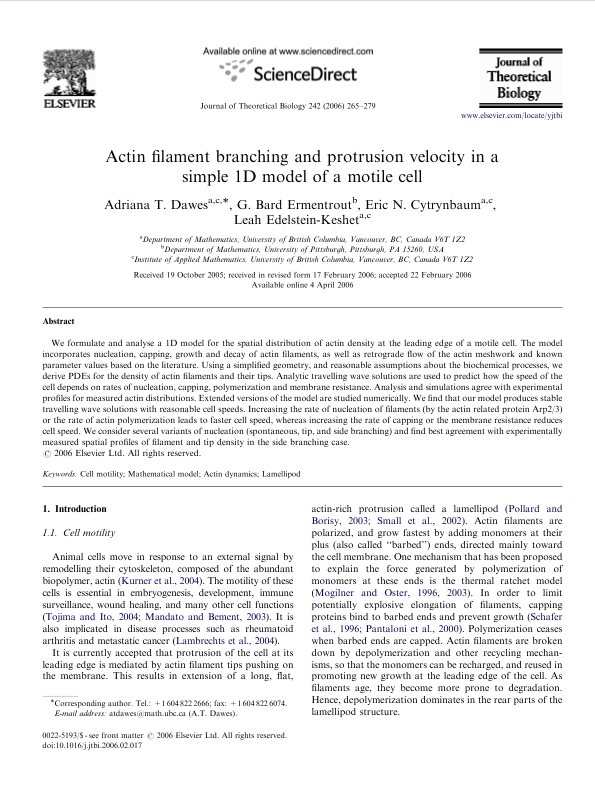Publications
| Abstract | We formulate and analyse a 1D model for the spatial distribution of actin density at the leading edge of a motile cell. The model incorporates nucleation, capping, growth and decay of actin filaments, as well as retrograde flow of the actin meshwork and known parameter values based on the literature. Using a simplified geometry, and reasonable assumptions about the biochemical processes, we derive PDEs for the density of actin filaments and their tips. Analytic travelling wave solutions are used to predict how the speed of the cell depends on rates of nucleation, capping, polymerization and membrane resistance. Analysis and simulations agree with experimental profiles for measured actin distributions. Extended versions of the model are studied numerically. We find that our model produces stable travelling wave solutions with reasonable cell speeds. Increasing the rate of nucleation of filaments (by the actin related protein Arp2/3) or the rate of actin polymerization leads to faster cell speed, whereas increasing the rate of capping or the membrane resistance reduces cell speed. We consider several variants of nucleation (spontaneous, tip, and side branching) and find best agreement with experimentally measured spatial profiles of filament and tip density in the side branching case. |
|---|---|
| A link to the paper |
 J Theor Biol, , 2006. |